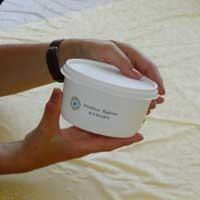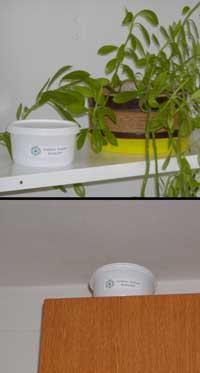for dwellings with higher radon concentrations and overview of results available in districts and villages
- The goal of the programme is to seek the maximum number of houses with higher radon concentrations so that owners of dwellings can reduce exposure to radon (with possible state financial support).
- The programme is coordinated by the State Office for Nuclear Safety, the National Radiation Protection Institute, and in close cooperation with district authorities.
- The measurements of radon are carried out within one year by means of track detectors (see Fig. 1 and 2), that are installed in the residential rooms of houses. The measurement that is a part of the state organized survey is free of charge.
- The results of the measurement are secret - the results will only receive the owner, or the user of the building.
Fig. 1: Track detector
Image

Fig. 2: Track detector - location in a room
Image

The basic rules of the target survey programme
The target survey programme is mainly focused on:
- Villages that are located in regions with a high radon risk (according to the geological radon risk map). In such villages, the measurements are offered to all houses (see below). In the other villages (i.e., with the middle and low risk), a selected survey of the dwellingsis uniformly carried out in the area, that is about 10 percent of all houses, taking into account the local geological conditions. The goal is to verify the geological prognosis reliability for radon risk. The particular order of the measurements in individual villages depends on the agreement between local authorities and district authorities.
- Residential areas in houses (or flats) and children's facilities (not specified for the survey of radon concentration at workplaces).
- Buildings where higher radon concentrations from soil are expected (i.e., houses having bad or no insulation against humidity, with no cellar under residential rooms, and houses standing on permeable or cracked rocks and geological defects (local dislocations), and houses built on slopes).